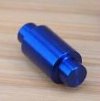- Joined
- Jan 4, 2016
- Messages
- 5,666
I was reading a review about the PM2 and it noted that the platform has not gone through a round of CQI like some other popular Spyderco knives. The reviewer's point was that this platform just "got it right" and has never needed significant improvement.
My opinion? The PM2 is a classic, must-have-at-least-one in every knife collection. It would get into the Hall of Fame on the first vote. Among the best knives ever. They can keep making them forever and I'm sure they'll sell forever, just the way they are.
But if (IF) Spyderco were to run it through the CQI process, what do you think should be updated?
I'd maybe suggest they put even a modest chamfer on the scales or do a hint of contouring. Something to soften those edges a bit.
(full disclaimer - if Spyderco has changed this knife in some way, I'm no expert on it's history. Please note what has been done.)
My opinion? The PM2 is a classic, must-have-at-least-one in every knife collection. It would get into the Hall of Fame on the first vote. Among the best knives ever. They can keep making them forever and I'm sure they'll sell forever, just the way they are.
But if (IF) Spyderco were to run it through the CQI process, what do you think should be updated?
I'd maybe suggest they put even a modest chamfer on the scales or do a hint of contouring. Something to soften those edges a bit.
(full disclaimer - if Spyderco has changed this knife in some way, I'm no expert on it's history. Please note what has been done.)


